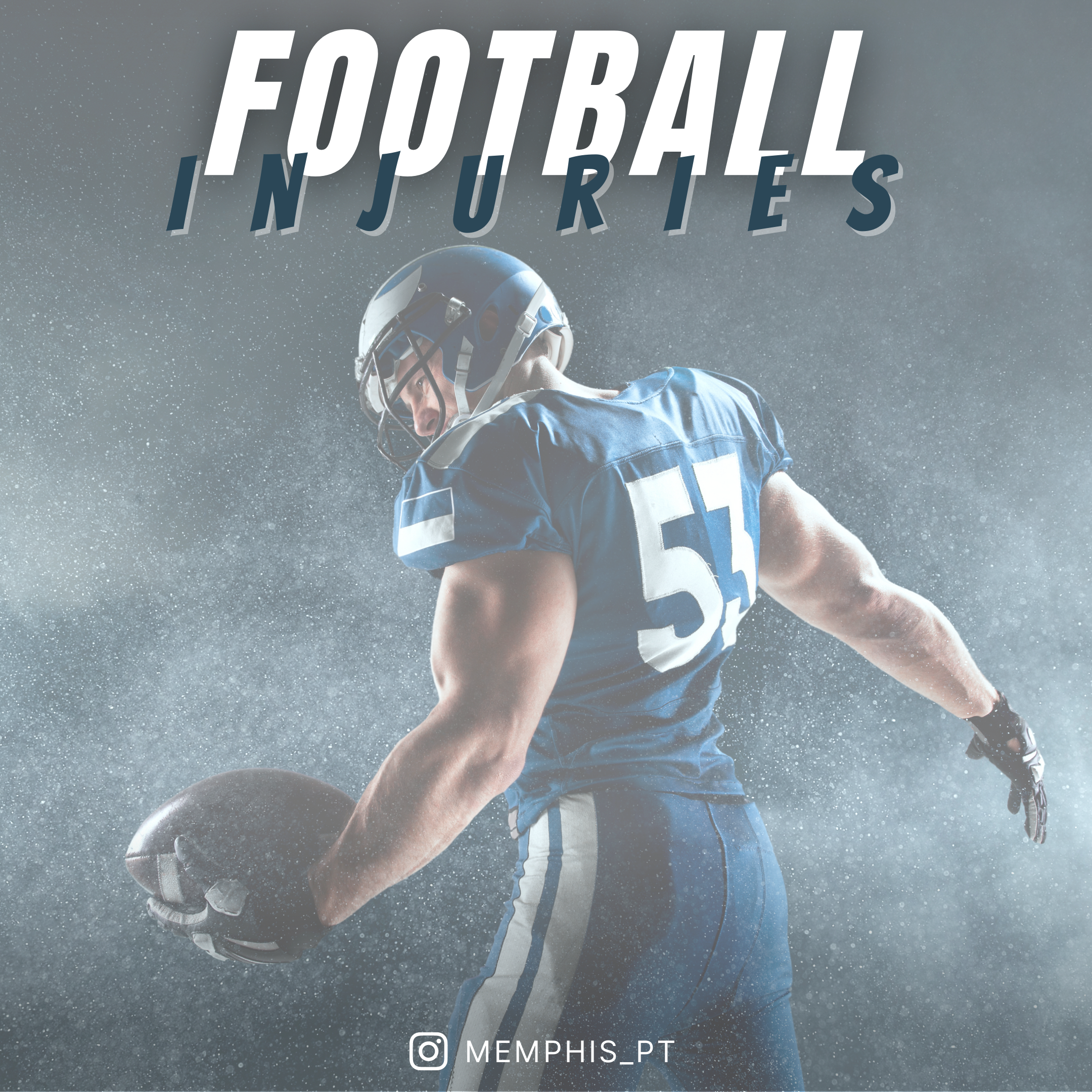
Football is the most popular yet dangerous sport to play, even when played at the student level. Sports injuries can do more than just cause a player to miss a few games throughout a season. Some injuries can have long-term impacts on a player. According to the Jump Start by WebMD, 60,000 collegiate athletes and more than 1 million high school athletes play football in the United States. Previous studies have shown that football has nearly twice the injury rate as the next most popular sport, basketball.
You can read more about the two studies that highlight the risk of youth sports injuries that student-athletes may experience on the field here.
Football players can get hurt at any time, whether it’s during a game or practice.
Common Football Injuries:
- Hamstring strains
- Muscle strain
- Ankle strain
- Concussions
- Shin splints
- Achilles tendonitis
- Knee ligament injuries (ACL)
- Metatarsal stress fractures
- Rotator cuff strains
- Jumper’s knee
Knee injuries are the most common, especially those to the cruciate ligament (ACL/PCL) and the menisci (cartilage of the knee). These injuries can affect a player’s long-term involvement in the sport.
Shoulder injuries are also very common in football. The labrum, a cartilage bumper surrounding the shoulder socket, is the area of the shoulder that is most prone to injury, especially to the offensive and defensive linemen.
Concussions:
Football players are very prone to concussions. A concussion is a traumatic brain injury that alters how the brain typically works after suffering a hit. Not all who suffer a concussion will lose consciousness.
Click here to read about the signs and symptoms of a concussion.
Athletes should not return to play unless cleared by a healthcare professional.
Overuse injuries:
Back pain is also very common in football players due to overuse. Overuse results in a player overtraining beyond the ability of the body to recover.
Heat injuries:
Heat injuries are a major concern among football players. Typically, training takes place in the summer when the temperatures are at their highest. Intense physical activity during the hot months can result in the body losing salt and water due to increased sweating. The earliest symptoms are painful cramping of major muscle groups. If not treated, this can lead to heat exhaustion and heat stroke – which can result in death. It is important for football players to be aware of these symptoms and to inform any medical staff of these possible symptoms.
Physical Therapy for Football Injuries:
Many football injuries can be treated specifically by a physical therapist. Depending on where the injury is, a therapist will design a program to strengthen the body and enhance a player’s range of motion. If an athlete has had surgery, the therapist will follow a specific protocol to keep them safe following surgery. The therapist will also take time to go through important information regarding your diagnosis and the path to a successful recovery. You can trust our physical therapist to help you make a full recovery and a comeback to sports.
While injuries may happen regularly in football, there are a few techniques that can lessen the frequency and severity.
How Can You Prevent Football Injuries?
- Have a pre-season health and wellness evaluation
- Perform proper warm-up and cool-down routines
- Consistently incorporate strength training and stretching
- Hydrate adequately to maintain health and minimize cramps
- Stay active during the summer break to prepare for the return to sports in the fall
- Wear properly fitted protective equipment
- Speak with a sports medicine professional or athletic trainer if you have any concerns about football injuries or football injury prevention strategies
